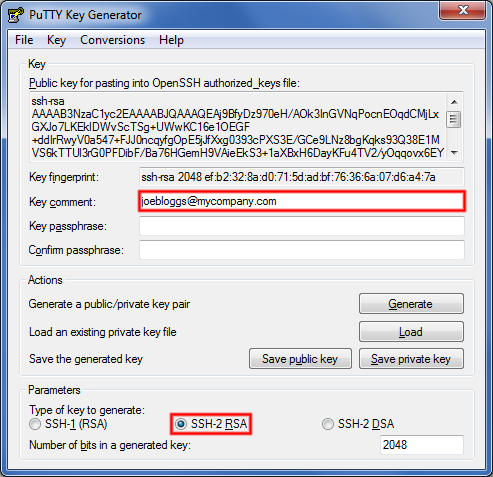- Generate An Ssh Key Linux
- Generate An Ssh Key For Gitlab
- Generate An Ssh Key For Gitlab
- Using Putty To Generate An Ssh Key Generation
- Ssh Key Github
The SSH key format is rather complex; if you want to implement it yourself, this, this and this answer might be a good start. However, someone else actually already did the work and created a NuGet package for generating SSH keys: SshKeyGenerator. Right now the package is offered for both.NET Framework and.NET Standard. To set up public key authentication using SSH on a Linux or macOS computer: Log into the computer you'll use to access the remote host, and then use command-line SSH to generate a key pair using the RSA algorithm. To generate RSA keys, on the command line, enter: ssh-keygen -t rsa.
This guide contains a description of setting up public key authentication for use with WinSCP. You may want to learn more about public key authentication or SSH keys instead.
- Configure Server to Accept Public Key
Advertisement
Generate An Ssh Key Linux
Before starting you should:
Generate An Ssh Key For Gitlab
- Have WinSCP installed;
- Know how to connect to the server without public key authentication.
If you do not have a key pair yet, start with generating new key pair.
Connect to your SSH server using WinSCP with the SSH protocol, using other means of authentication than public key, e.g. typically using password authentication.

Once logged in, configure your server to accept your public key. That varies with SSH server software being used. The most common SSH server is OpenSSH.
You can use Session > Install Public Key into Server command on the main window, or Tools > Install Public Key into Server command on SSH > Authentication page page on Advanced Site Settings dialog. The functionality of the command is similar to that of OpenSSH ssh-copy-id command.
Or you can configure the key manually:
- Navigate into a
.sshsubdirectory of your account home directory. You may need to enable showing hidden files to see the directory. If the directory does not exists, you need to create it first. - Once there, open a file
authorized_keysfor editing. Again you may have to create this file, if this is your first key. - Switch to the PuTTYgen window, select all of the text in the Public key for pasting into OpenSSH authorized_keys file box, and copy it to the clipboard (
Ctrl+C). Then, switch back to the editor and insert the data into the open file, making sure it ends up all on one line. Save the file. WinSCP can show you the public key too. - Ensure that your account home directory, your
.sshdirectory and fileauthorized_keysare not group-writable or world-writable. Recommended permissions for.sshdirectory are700. Recommended permissions forauthorized_keysfiles are600. Read more about changing permissions.
There are some specifics when setting up the public key authentication on OpenSSH server on Windows.

- Save a public key file from PuTTYgen, and copy that into the
.ssh2subdirectory of your account home directory. - In the same subdirectory, edit (or create) a file called
authorization. In this file you should put a line likeKey mykey.pub, withmykey.pubreplaced by the name of your key file.
For other SSH server software, you should refer to the manual for that server.
When configuring session, specify path to your private key on SSH > Authentication page of Advanced Site Settings dialog.
Alternatively, load the private key into Pageant.
Generate An Ssh Key For Gitlab
Cloud providers have typically their own mechanism to setup a public key authentication to virtual servers running in the cloud.

Using Putty To Generate An Ssh Key Generation
For details see guides for connecting to:
- Amazon EC2;
- Google Compute Engine;
- Microsoft Azure.
Ssh Key Github
- Using public keys for authentication;
- Using PuTTYgen;
- Understanding SSH key pairs.